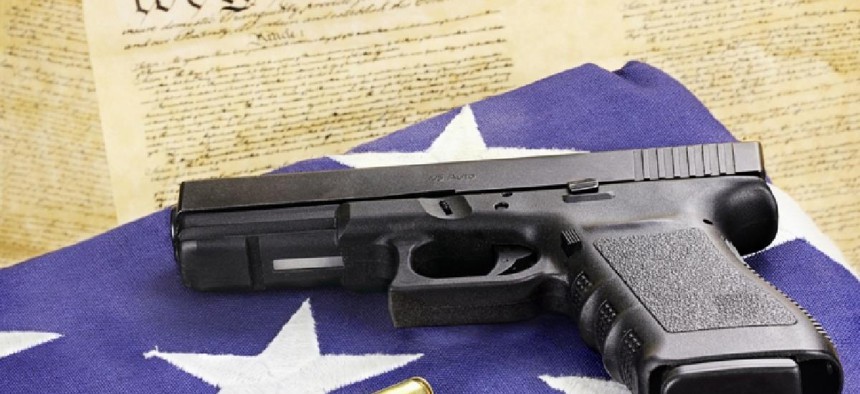Gun Control
Decoding Pennsylvania's gun control paradox

Shutterstock
America has endured 154 mass shootings so far this year – from Parkland, Florida to Annapolis, Maryland. Despite this national carnage, nothing so far has moved the Pennsylvania state legislature to pass even the most innocuous gun control legislation.
Why?
Clearly, the answer is not lack of opportunity. Scores and scores of gun control measures are routinely introduced into the legislature to no avail.
Good old-fashioned interest-group politics explains some of the legislature’s paralysis. Pennsylvania is rich with both sportsmen and sportsman lobbies. The NRA alone is arguably the most powerful lobby in the state, making gun control measures still the third rail of state politics.
This year, however, several gun control measures seemed ripe for passage. These were not the perennially divisive bills such as those that would limit the sale of automatic or semi-automatic weapons or seek to restrict handgun ownership. Instead, they were the product of a broadly bipartisan consensus that raised only modest controversy.
These bills included HB 273, which would allow people to voluntarily put themselves on a no-buy firearm list; and HB 2463, which would create a legal process to reinstate the right to buy firearms to those that temporarily lost that right through emergency involuntary commitment for mental health issues.
Among these bills, the one most likely to pass – HB 2060 – was designed to stop domestic abusers under protection from abuse orders from having access to guns. Similar legislation earlier passed the state Senate unanimously.
In the House, though, some objections were raised because of evidentiary and other due process issues. The belief that PFA orders sometimes were used as malicious strategy in divorce and child custody cases also raised concerns about the bill.
House sponsors of the bill ultimately crafted a compromise: If the PFA had included a voluntary consent agreement, the actual surrender of guns would be subject to the discretion of the court.
But final passage in the House was not to be. After a compromise amendment was approved overwhelmingly (29-6) by the Appropriations Committee, the House promptly left town for the summer.
The failure to adopt this and other non-controversial gun reform bills is blatantly contemptuous of views expressed repeatedly by Pennsylvania’s registered voters. Twice earlier this year the Franklin and Marshall College Poll questioned state voters about their views on gun control.
A substantial 72 percent of Pennsylvania’s registered voters support additional gun regulations. A policy of enhanced background checks is strongly supported by 86 percent of state voters, while 61 percent strongly favor banning assault-style weapons, and a similar majority, 59 percent strongly favor increasing the minimum age to 21 to purchase a gun.
Hence this persistent Pennsylvania paradox: The vast majority of the state’s voters support what might be termed “common sense” gun control – yet the legislature fails to act on even the most non-controversial gun control measures.
True, sports hunting and target shooting remain vibrant in the state, and gun lobbyists exercise enormous influence over the most mundane of gun control measures.
But lobby power at best is only a partial explanation for the Pennsylvania paradox. Equally important if not more important are the political party differences revealed by polling data. These party differences on gun control explain why in general more Republican lawmakers than Democrats oppose many gun regulations.
Gun ownership heads the list. Overall, almost one of every three Pennsylvanian owns a gun (31 percent). But of the gun owners, only one in five Democrats own them (20 percent) while almost half of Republicans do (46 percent). This “ownership gap” clearly leads to very different attitudes and opinions about gun control.
For example, on the important issue of passing additional laws to regulate gun ownership, huge differences exist between Democratic and Republican voters. More than eight of 10 Democrats (86 percent) favor additional laws but only half of Republicans do (50 percent).
The differences between liberals and conservatives on this issue are stunning. More than nine of 10 self-described liberals (93 percent) advocate more gun regulation while less than four of ten conservatives do (38 percent).
Other demographics show a similar skew. Some 84 percent of those with college degrees support more gun control, while only 43 percent of those with high school educations or less do. Similar gaps exist for age as well in other key demographics.
The larger story here goes beyond lobby power or even stark demographic differences.
Pennsylvanians are polarized on gun control along party and ideological grounds – as indeed they are today along so many other issues ranging from health care to taxes to education to minimum wage to immigration … and on and on.
This polarization in the electorate helps explain the Pennsylvania paradox on guns as well as the almost total paralysis preventing the legislature from taking even simple measures on gun control. Pennsylvanians are deeply divided along party and ideological lines.
Once upon a time, centrists and moderates bridged that gap and brokered the compromises that keeps democracy functioning. Today centrists in both parties have become the roadkill of American politics. The Right deplores them; the Left ignores them.
But democracy doesn’t work without them.
And it isn’t.
G. Terry Madonna is Professor of Public Affairs at Franklin & Marshall College, and Michael Young is a speaker, pollster, author, and was Professor of Politics and Public Affairs at Penn State University. Madonna and Young encourage responses to the column and can be reached, respectively, at terry.madonna@fandm.edu and drmikelyoung@comcast.net.
